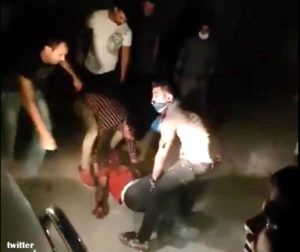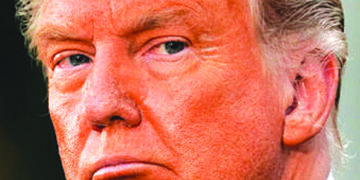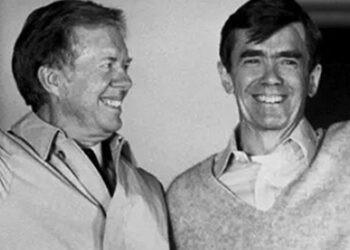May 26, 2018

Demonstrations and protests against the government continue almost daily somewhere in the provinces, with one in Kazeroun erupting in violence recently that ended with two men killed.
Kazeroun, located in Fars province, has seen many nights of protests originally focused on a proposal before the Majlis to split the county in two, with the part including the historical site of Bishapur and other historical landmarks being made into a new county to be called Kouhchenar.
The provincial governor general, Esmail Tabadar, said earlier this month that the plan to split the county has been shelved for further study. But the protests continue and have expanded to include other complaints. Video showed protesters chanting, “Do not lie to us…. You are the enemy, not America.”
Fars Deputy Bahram Parsai-nejad said that while the protests began last year over the splitting of the county, they have since expanded to general complaints about lack of jobs and poor economic prospects—and other issues. On April 20, a crowd stormed the site of Friday Prayers, demanding the removal of the city’s prayer leader. Prayer leaders are named by the Supreme Leader.
The government said one person was killed May 17, but the Center for Human Rights in Iran said at least two died. It quoted an eyewitness as saying local people had gathered outside the city police station awaiting the release of friends and relatives arrested earlier during the evening’s protest. The police emerged from the station to say no one would be freed that night and ordered the crowd to disperse. Some refused to leave. Shots ensured. Seven people were hospitalized, two of whom died, the eyewitness said.
The Iran Human Rights Monitor later identified the dead as Omid Yousefian, a house painter, and Ali-Mohammadian-Azad. It said videos showed men shooting into the crowd from the roof of the police station.
Kazeroun has seen the most dramatic of the countrywide protests this past month. But many other protests are going on elsewhere over a variety of grievances.
For example, rice farmers in Khuzestan province have held several days of protests outside the governor general’s office in Ahvaz objecting to the ban on rice planting because of the severe water shortage. The authorities have urged the farmers to plant soya or other beans, but the farmers say they can’t make as much money from beans as from rice.
In Arak, capital of Markazi province, workers from the Heavy Equipment Production Company (HEPCO) blocked the main north-south rail line May 14 and again May 22 for several hours to protest not being paid for three months, the Iranian Labor News Agency (ILNA) reported. HEPCO was privatized last year and the local union said on its Telegram channel that employment has been cut from 8,000 to 1,000 since then. Many nationalized firms were grossly overstaffed in an effort to reduce unemployment, so privatization has resulted in mass staff reductions.
Teachers protesting low pay and reduced funding for schools said they staged demonstrations in at least 30 cities across Iran May 10. In Tehran, several of the protesting teachers were arrested and taken to Evin Prison after police waded into the crowd to break it up with batons. ILNA said six protesters were arrested while the Human Rights Activist News Agency (HRANA) put the number at 15. Radio Zamaneh, based in the Netherlands, said the teachers refused to pay bail set at $12,000 each. Teachers have been protesting regularly for more than two years.
Truck drivers launched a strike May 22 in seven of Iran’s 31 provinces—Fars, Hormuzgan, Esfahan, Kerman, Khorasan Razavi, Lorestan and Qazvin. Videos showed them holding up signs complaining that their costs are rising while their wages remain the same. They said their rising costs involved insurance, highway tolls, commissions, repairs and spare parts.
Social media reported at least two days of protests in Hamidiyeh, near Ahvaz, by irrigation workers employed by the city who say they have not been paid for five months. Such protests about delayed pay generally come from the private sector, not the public sector.
International Labor Day, May 1, produced reports of labor marches all over Iran. They called for higher pay and pensions and better working conditions. ILNA said six workers were arrested at a protest outside the gates of the Majlis building in Tehran.
Kurdistan has seen a different kind of protest. Shopkeepers have shuttered their businesses to protest the govern-pment’s new—and apparently successful—campaign to clamp down on the border to stop porters from smuggling goods both ways—into Iraq from Kurdistan and from Iraq to Kurdistan province. The closures have been reported from Baneh, Marivan, Saqqez, Javanrud, Sardasht and other border cities.
Arabs in Ahvaz have continued protests with parents recently joining in the protests to demand the release of their children jailed for engaging in earlier protests. Those protests complained about state bias against Ahvazi Arabs. The Ahvaz Human Rights Organization produced a list of 70 names of jailed Arabs, but says many more are being detained. Among those jailed is 15-year-old Maedeh Shahbani-nejad, who stands accused of inciting violence with her poetry. Her father, Sahid, said, “I am amazed that the Iranian government is afraid of a 15-year-old girl.”
In Esfahan, long-standing protests by farmers against the diversion of river water to Yazd province are continuing. The chanting included, “Farmers will give their lives before accepting humiliation” and “The enemy is right here; they’re lying when they say he’s in America.”















